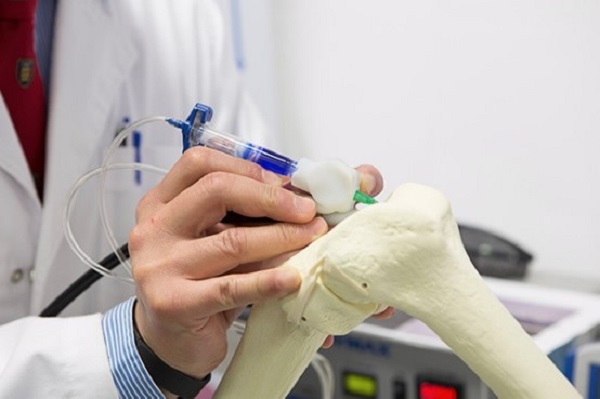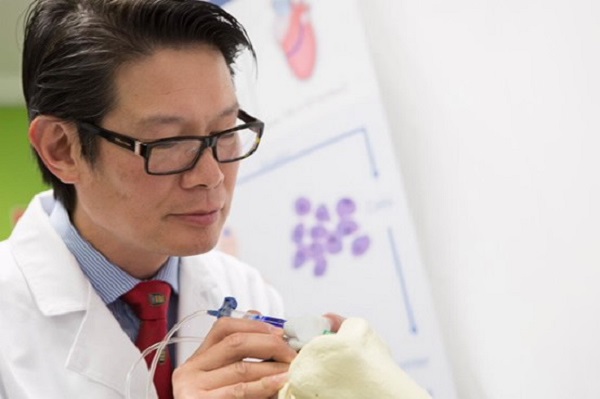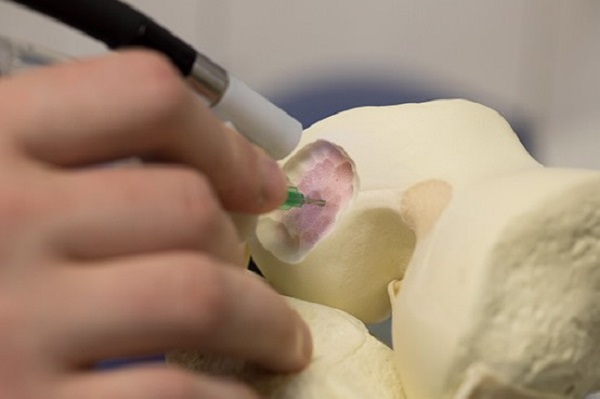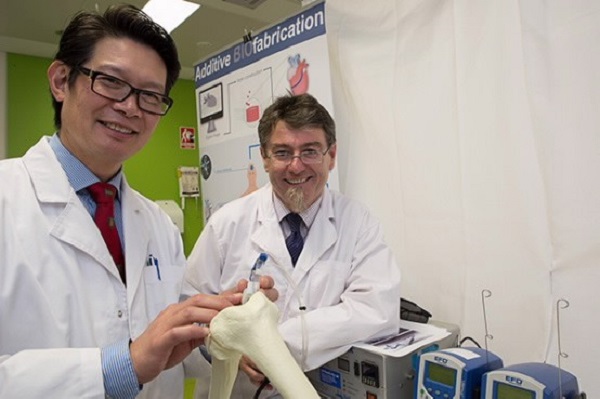Orthopedic surgeons are confronted every day with some of the most difficult interventions, as they have to deal with muscle tissue, bones and nerves. BioPen is a miniature 3D printer that should ease their burden quite a lot.
Developed by researchers at University of Wollongong, the BioPen could turn out to be the Holy Grail of orthopedic surgeons, as such a handheld 3D printer would enable them to create personalized solution for each patient, at the right place, at the right time. A few years ago, scientists 3D printed blood vessels and now progress is made in printing organs and even specialized cells. Should things follow this trend, we’ll soon get rid of the nosocomephobia (the fear of hospitals).

What this device extrudes is cell material encapsulated in alginate, a biopolymer. The latter is protected by a layer of gel. A low-powered UV light source attached to the pen solidifies the extruded materials. Upon being placed on the bone wound, the cell material starts differentiating, thus giving birth to nerve, muscle or bone cells.
According to Professor Peter Choong, Director of Orthopaedics at St Vincent’s Hospital Melbourne and the Sir Hugh Devine Professor of Surgery, University of Melbourne, “This type of treatment may be suitable for repairing acutely damaged bone and cartilage, for example from sporting or motor vehicle injuries. Professor Wallace’s research team brings together the science of stem cells and polymer chemistry to help surgeons design and personalize solutions for reconstructing bone and joint defects in real time.”

In turn, ACES Director Professor Gordon Wallace stated that “The combination of materials science and next-generation fabrication technology is creating opportunities that can only be executed through effective collaborations such as this. What’s more, advances in 3D printing are enabling further hardware innovations in a rapid manner.” There’s no denying about that, as 3D printing seems to evolve with each passing day.

The shape of the BioPen influences both its functionality and characteristics. First of all, this handheld 3D printer is very precise, allowing surgeons to treat exactly what needs to be treated in a very effective manner. Secondly, since it is handheld, it is very portable and can be transported from one place to another very easily. Such a feature would enable surgeons to treat patients whose lives are put in danger if transported to a hospital before being treated.

If you liked this post, please check Foodini, the pizza 3D printer, and this bizarre 3D printed mold that might one day replace our toothbrushes.










